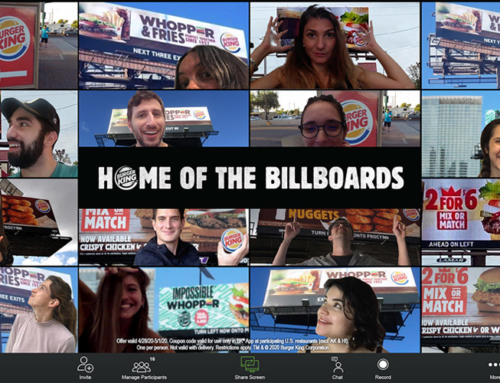Have you ever given thought to how you communicate your creative feedback? Would you say your input is clear and actionable, or is it lofty or vague? Do you tend to micromanage the details instead of considering the overall message?
Here’s a good example. Check out this mock ad with some classic bad feedback examples.
“Can you make it pop more?”
“Bold all the text.”
“This does not attract me.”

Now, here’s the ad with those changes made.
Do you think we accomplished the desired results based on the feedback we received? How else could we have interpreted it? What would you have done?

When it comes to creative feedback, we at MarketMatch have seen the good, the bad and the ugly. Our creative team has amassed decades of experience, meaning we’ve seen and heard just about everything. We’d like to share some of what we’ve learned about ways to provide good creative feedback.
Be Kind
Art is subjective. We don’t all like the same things. That’s OK. What’s not OK is being mean when something doesn’t fit your vision. The human brain is wired to focus on the negative more strongly than the positive, and that can lead to comments that are mean and unproductive. Examples of this include “Hate it,” “This is terrible,” or a variety of the classic “I could have done better.” Comments such as these can leave your team frustrated and unmotivated.
As you offer feedback, remember that there’s a real person behind the copy and the design, and nobody likes constant put-downs. Instead, try to focus on the positives. If you like a design element or copy, say it! A little praise goes a long way to help facilitate trust and appreciation.
If you do have constructive criticism, be mindful of how you’re conveying your feedback to ensure it’s positive and productive. First state what the problem is and explain your reasonings for your criticism. Your “Hate it” comment could be, “This picture doesn’t quite fit our target market. Do you have something of a similar style that has an older grouping of people instead?” Resist simply making changes just to make changes. Providing good reason for your criticisms makes it easier for everyone to understand, and it just feels kinder than “Hate it.”
Give Feedback Based Upon Your Area of Expertise
When you’re working on a project with lots of pieces, it’s easy to fall into the trap of commenting on everything that comes your way. We advise that you stay in your lane and only make edits to the things that pertain to your expertise. So, if you’re a loan officer, you probably shouldn’t be dictating what the font size should be or complaining about the color palette. Instead, provide input that pertains to what you know. Trust that the marketing or creative team members know what they’re doing and have specialized skills and experience you don’t.
Give feedback on the parts of the project with which you’re familiar. Maybe you prepared the strategy and have some valuable insight into why a certain phrase or image isn’t going to work. Or maybe you’re a part of the legal team and you have changes to the disclaimer. It’s better for the project and all involved if you stick to what you know. This prevents the process from getting bogged down by endless back-and-forth comments that can easily derail a project or timeline.
Stay Focused on the Goal
Often times we see clients zero in on the smallest details without stepping back to remember the big picture. This can lead to missed deadlines, deviations from strategy and missed goals. Instead of getting hyper-focused on whether or not the text should be all capped or bold or details of an image that won’t even be noticed by anyone other than you, try to picture the project as a whole and proceed accordingly.
A response like “I don’t like the shirt color of the third guy in the second row of the background of that car image,” is probably something that isn’t going to make or break an auto loan mailer. So before you provide input like this, ask yourself if this change even matters to the business objective and frame your feedback accordingly.
Providing bad creative feedback usually leads to extra work, frustration, delays and more questions all around. Nobody wins. Good creative feedback, on the other hand, allows for a more effective workflow to move your project forward and empowers your team to work hard on the next project you send their way.
Now, back to the ad.
Here are those same edits but worded in a way that offers more clarity toward the overall goal.
“Can you draw more attention to the callout special?”
“The headline seems to get a little lost in the blue. Can you bold it or add dimension so it stands out?”
“Love this image, but can we make it bigger?”
As you can see, good communication really does make a difference.







